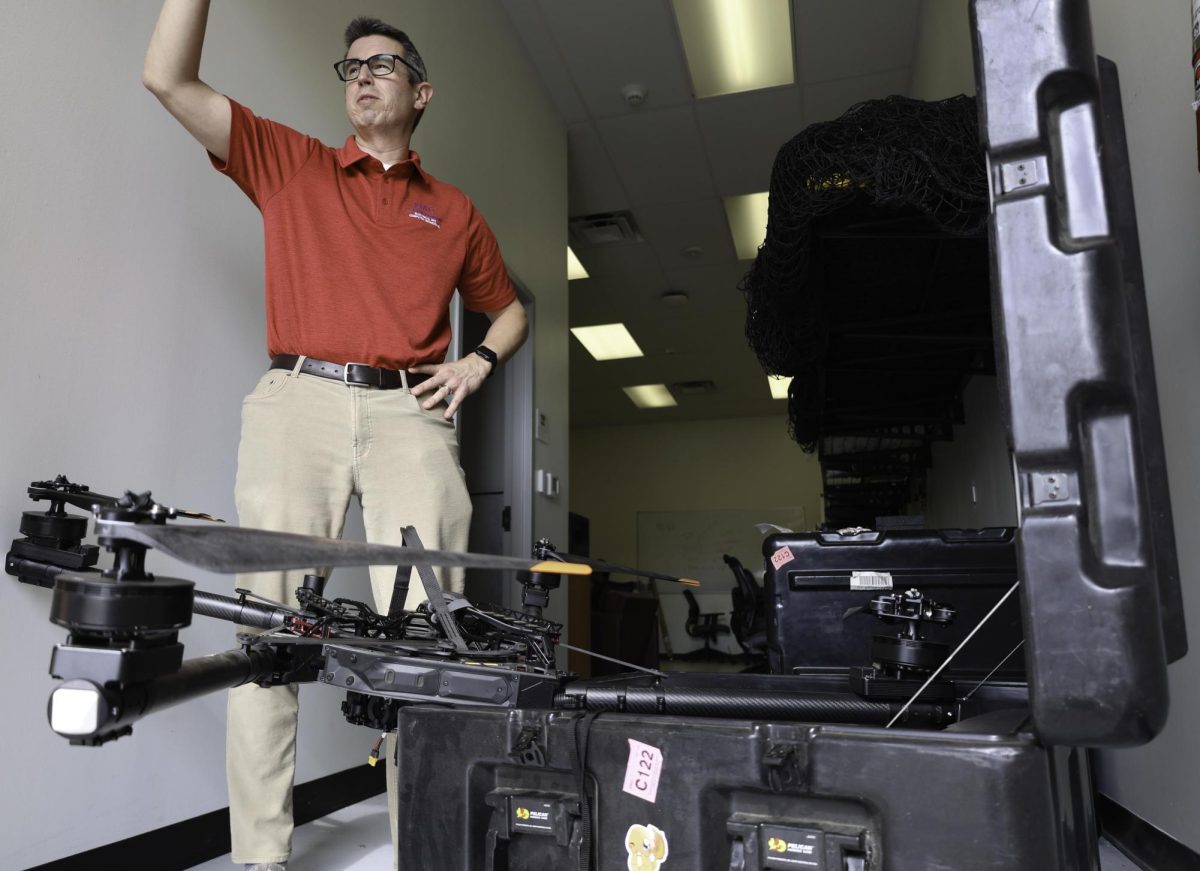Author and poetry translator Andrew Zawacki combined his Paris graffiti photographs and beautiful prose to enlighten SMU students on the meaning behind the “riff raff” on Thursday night.
A small group of 20-25 students and graduate students gathered in Heroy 153 at 5:30 p.m. on Thursday to hear a preview of “Paris Photo Graff,” Zawacki’s ongoing “photograffiti” project. The project explores the aesthetics and politics of graffiti through the sensibilities of a poet and photographer.
“Zawacki is a brilliant poet, stunning with language of high-def imagery and astonishing sounds as he excavates what technology is for contemporary life,” Seth McKelvey said, SMU grad student and organizer of the lecture. “Anyone interested in the relationships between contemporary life in the city and art, language, and law should find this talk provocative and illuminating.”
Zawacki, author of four books of poetry, co-editor of the international literary journal Verse, and Director of the Creative Writing Program at the University of Georgia, showed students several of his photographs of Paris graffiti while reading the prose that he wrote to accompany and describe each piece of artwork.
Zawacki combined historical references to the Cold War, literary references to Doctor Seuss, and references to popular Parisian and American culture to eloquently capture the purpose and message that drives the graffiti artwork.
“I liked when he said, ‘Where does language stop and pictures begin?'” SMU sophomore Molly Cronin said, who was in attendance to write a paper for class. “It’s an interesting take on photography. He’s trying to make photographs a print using just black and white photos and he’s a very passionate speaker.”

Zawacki’s photographs ranged from pictures of abstract tags on walls to full blown murals, each with their own specific story and history.
“In Paris, you can follow a trend of graffiti that goes from paintings full of political commentary and kind of a middle finger to the establishment, all the way to guys who say they want to rid their art of political messages,” Zawacki said. “I wanted to make sure I was writing prose that was inspired by the graffiti instead of having an idea of what I wanted to say beforehand.”
Zawacki’s lecture only incorporated a small fraction of the photos and prose in his project that followed the same theme of red graffiti; however, all of his photos were shot in black and white. The removal of color heightens the importance of his prose.
“He brings his poetic skills to bear on his photography, creating images that go beyond the graffiti they seem to capture; his photographs are beautiful, becoming their own works of art even as they take the street art of Paris as their source,” McKelvey said.








